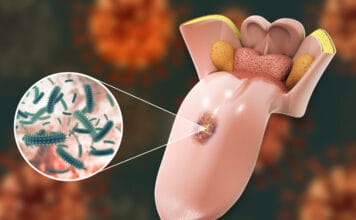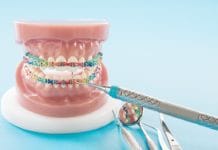Test your infection control knowledge with this quick quiz!
In dentistry, a noncritical patient care item only touches intact skin and holds the least risk of transmission of infection. Handpieces are categorized as a noncritical item and thus can be sterilized with a surface disinfectant.
In dentistry, both slow and high-speed handpieces are considered semicritical devices because they touch mucous membranes or nonintact skin and have a lower risk of transmission. However, according to the Centers for Disease Control and Prevention (CDC), dental handpieces pose a greater risk of transmission due to the potential for internal contamination. Additionally, the CDC recommends that because the majority of semicritical items in dentistry are heat tolerant, they should be sterilized using heat versus a surface disinfectant.
Kohn, W.G., Collins, A.S., Cleveland, J.L., Harte, J.A., Eklund, K.J., Malvitz, D.M. Guidelines for Infection Control in Dental Health-Care Settings - 2003. MMWR Recommendations and Reports. 2003, 52(RR17), 1-61. Retrieved from https://www.cdc.gov/mmwr/preview/mmwrhtml/rr5217a1.htm
According to the CDC, patient-care items like dental instruments, devices, and equipment fall into which of the following categories?
The CDC has created three sterilization and disinfection categories into which dental instruments, devices, and equipment may fall: critical items, semicritical items, and noncritical items. These regulations are based on the potential risk for infection associated with each item’s intended use. According to the CDC definitions,
· Critical items used to penetrate soft tissue or bone have the greatest risk of transmitting infection and should be sterilized by heat.
· Semicritical items touch mucous membranes or nonintact skin and have a lower risk of transmission; because the majority of semicritical items in dentistry are heat-tolerant, they also should be sterilized by using heat. If a semicritical item is heat-sensitive, it should, at a minimum, be processed with high-level disinfection.
· Noncritical patient-care items pose the least risk of transmission of infection, contacting only intact skin, which can serve as an effective barrier to microorganisms. In the majority of cases, cleaning, or if visibly soiled, cleaning followed by disinfection with an EPA-registered hospital disinfectant is adequate.
Kohn, W.G., Collins, A.S., Cleveland, J.L., Harte, J.A., Eklund, K.J., Malvitz, D.M. Guidelines for Infection Control in Dental Health-Care Settings - 2003. MMWR Recommendations and Reports. 2003, 52(RR17), 1-61. Retrieved from https://www.cdc.gov/mmwr/preview/mmwrhtml/rr5217a1.htm
Research indicates that percutaneous injuries among general dentists and oral surgeons have decreased in frequency since the mid-1980s, largely due to which of the following?
When compared with general and orthopedic surgeons, research indicates that percutaneous injuries among general dentists and oral surgeons occur less frequently and have shown a decrease in overall frequency since the mid-1980s. When these injuries do occur, they usually do so outside the patient’s mouth, involve limited amounts of blood, and are caused by laboratory knives, sharp instruments, burs, and syringe needles. The decline in these types of healthcare worker injuries is due to safer work practices, safer instrumentation and design, and continued education for the healthcare worker.
Kohn, W.G., Collins, A.S., Cleveland, J.L., Harte, J.A., Eklunt, K.J., Malvitz, D.M. Center for Disease Control and Prevention. Guidelines for Infection Control in Dental Health-Care Settings – 2003. MMWR 2003; 52 (Report No. 17). Retrieved from http://www.cdc.gov/mmwr/PDF/rr/rr5217.pdf
Studies prove the wearing of rings in a healthcare setting results in a greater transmission of pathogens.
False. Multiple studies throughout the years have demonstrated that for healthcare workers, the skin underneath rings is more heavily colonized when compared to skin on fingers without rings. However, whether or not the wearing of rings results in greater transmission of pathogens is unknown. In one study of more than sixty intensive care nurses, it was revealed that rings were the main risk factor for the carriage of gram-negative bacilli and S. aureus. Two other studies demonstrated that the average bacteria count after handwashing was similar for those wearing rings and those without. At this point, data is inconclusive, and further studies are needed to determine if healthcare workers who wear rings pose a greater effect on transmission pathogens.
Centers for Disease Control and Prevention. Guideline for Hand Hygiene in Health-Care Settings: Recommendations of the Healthcare Infection Control Practices Advisory Committee and the HICPAC/SHEA/APIC/IDSA Hand Hygiene Task Force. MMWR 2002;51(No. RR- 16):[30].
CDC guidelines state there are three levels of disinfection for patient care items that do not require sterility: high, intermediate, and low. The product manufacturer’s directions regarding use, concentrations, and exposure times should always be followed.
True. According to CDC guidelines, disinfection is adequate when it is not required to sterilize a patient care item. The three levels of disinfection are high, intermediate, and low. For environmental surfaces such as counters and chairs, intermediate and low disinfection are acceptable. There are many types and variations of disinfecting agents available to the dental clinician, and it is always recommended to read the product manufacturer’s directions prior to use as this will provide specific directions regarding use, concentrations, and exposure time.
Kohn, W.G., Collins, A.S., Cleveland, J.L., Harte, J.A., Eklund, K.J., Malvitz, D.M. Guidelines for Infection Control in Dental Health-Care Settings - 2003. MMWR Recommendations and Reports. 2003, 52(RR17), 1-61. Retrieved from https://www.cdc.gov/mmwr/preview/mmwrhtml/rr5217a1.htm












